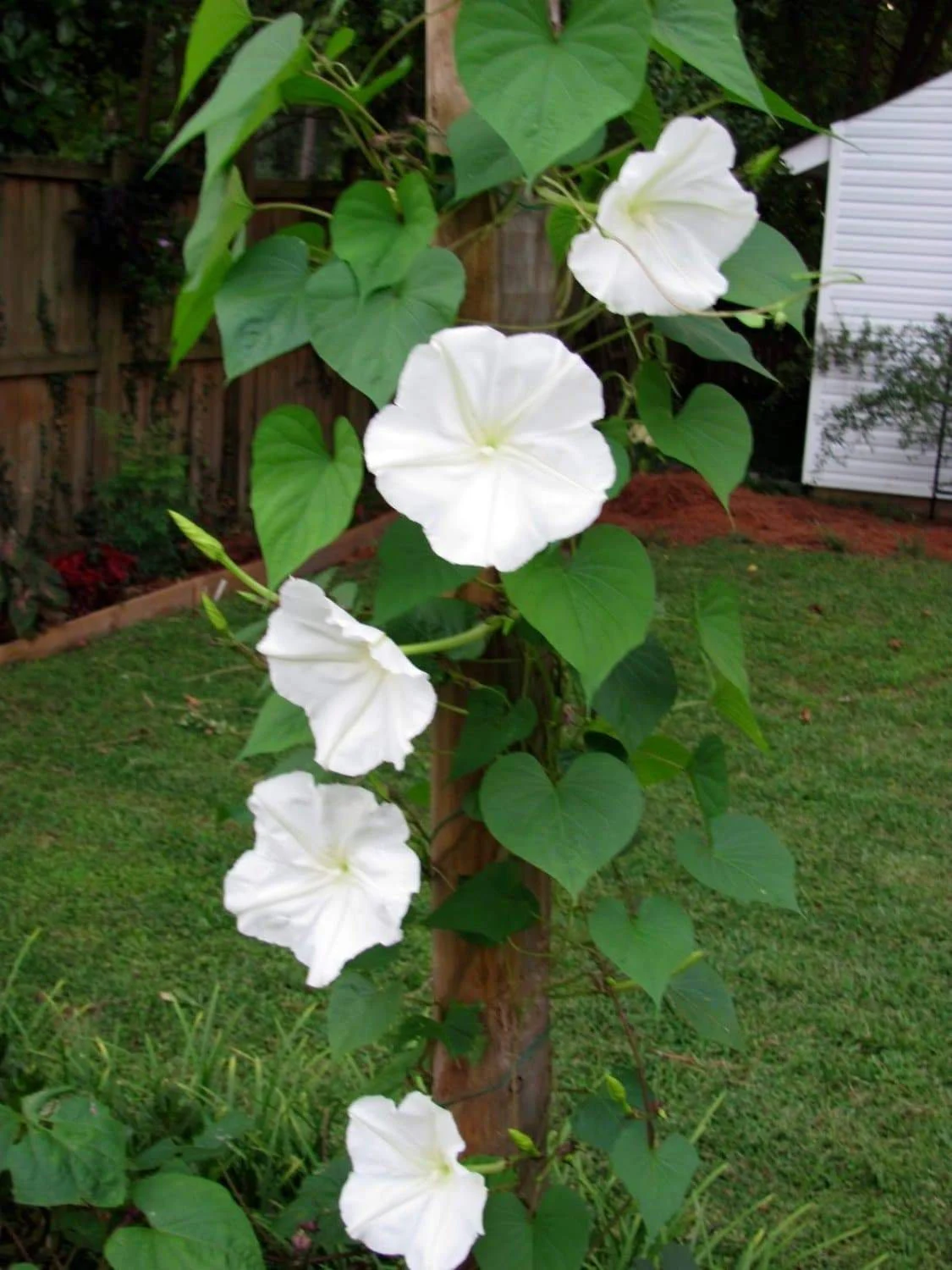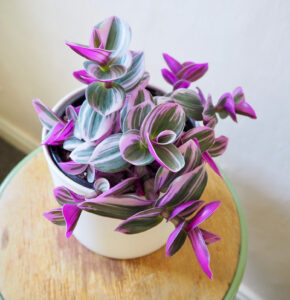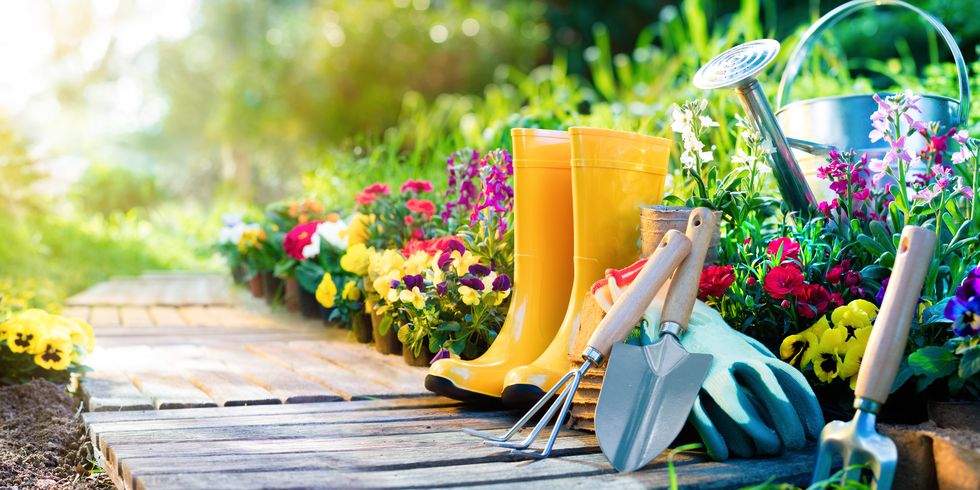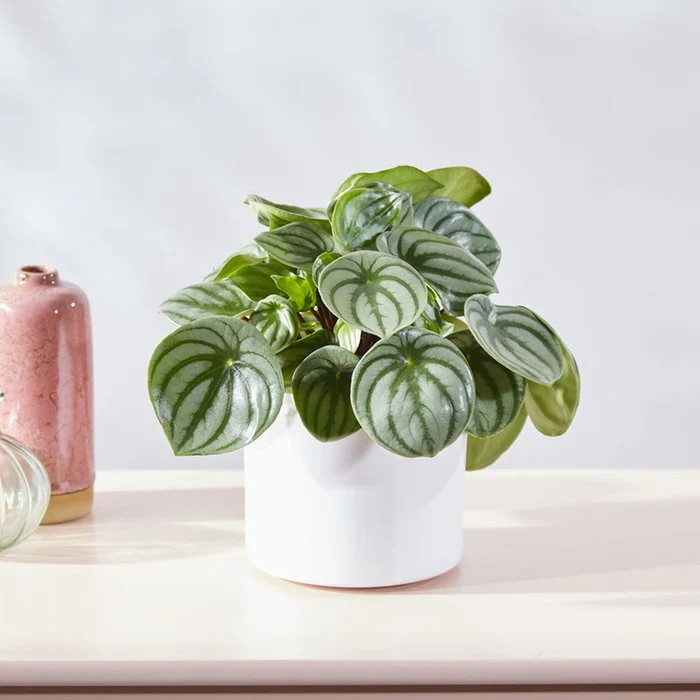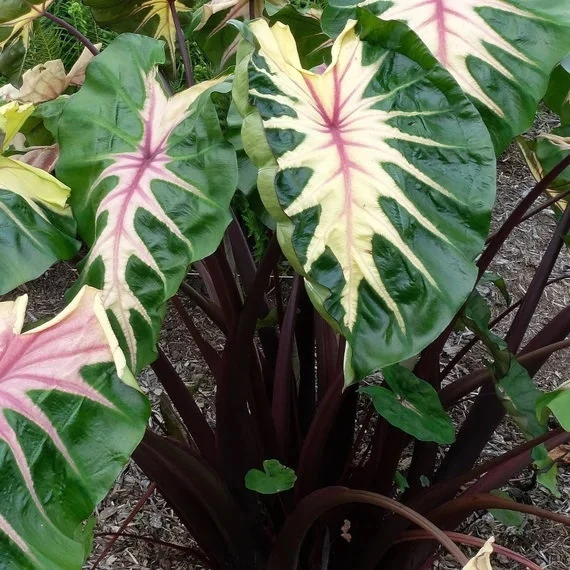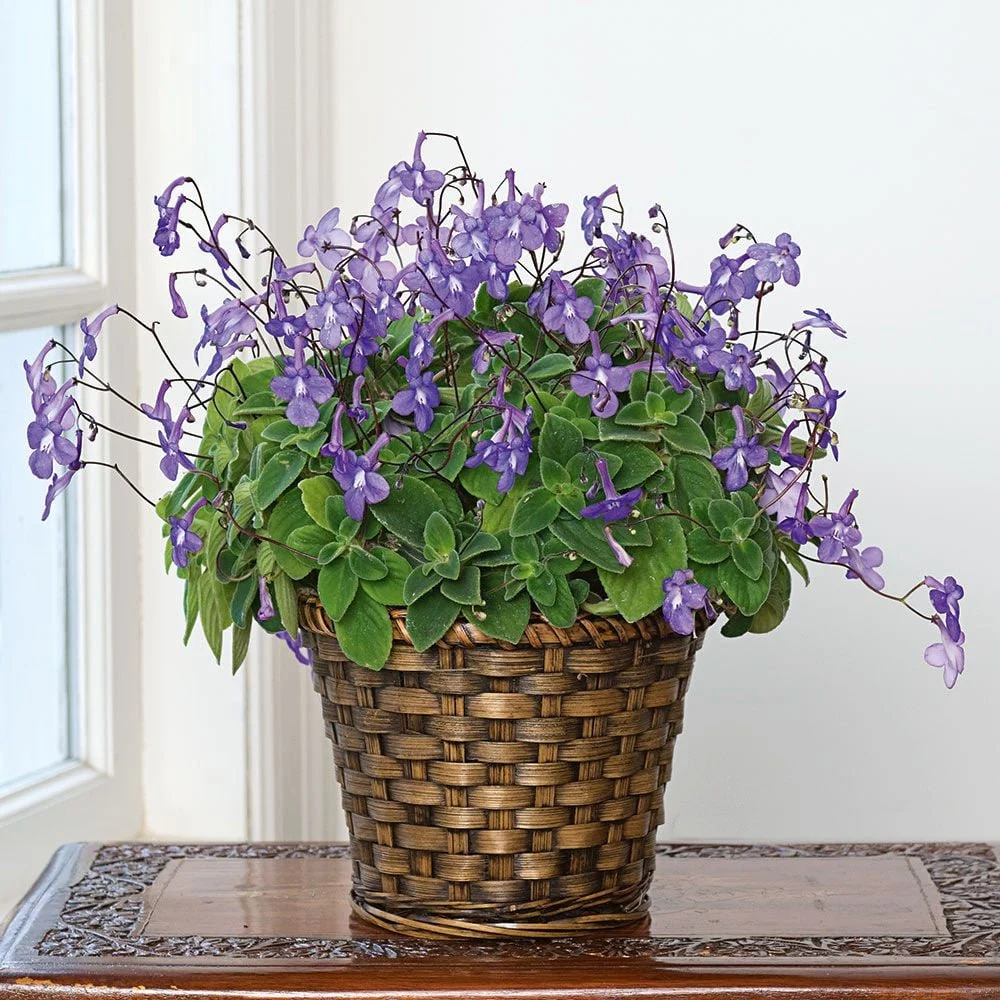Moonflowers (Ipomoea alba) are beautiful, fragrant flowering vines that bloom at night, releasing their stunning, white or pale blossoms after the sun sets. Known for their large, heart-shaped leaves and trumpet-shaped flowers, moonflowers are perfect for adding a touch of mystery and elegance to gardens, trellises, or arbors. Their night-blooming nature also makes them a unique addition to any garden, attracting pollinators like moths in the evening hours. In this guide, we’ll cover how to grow, care for, and maintain moonflowers.
1. Ideal Growing Conditions
Moonflowers thrive in specific conditions that mimic their native tropical and subtropical environments.
Key Growing Conditions:
- Light: Moonflowers need full sun during the day to produce the best blooms. They thrive when given at least 6-8 hours of direct sunlight each day. The more sunlight they receive, the better they will grow and bloom.
- Temperature: Moonflowers are warm-weather plants and grow best in temperatures between 70°F to 90°F (21°C to 32°C). They are sensitive to frost and cannot tolerate cold weather. Plant them after the last frost date when temperatures are consistently warm.
- Humidity: Moonflowers prefer moderate to high humidity levels, making them perfect for tropical and subtropical climates. If grown in drier conditions, regular watering is important to keep the plant hydrated.
2. Soil and Planting Requirements
Moonflowers require well-draining, nutrient-rich soil for optimal growth.
Soil Requirements:
- Well-Draining Soil: The soil should be light, loamy, and well-draining to prevent waterlogging. They do not like wet feet, so ensure the soil has good drainage to avoid root rot.
- Soil pH: Moonflowers prefer slightly acidic to neutral soil with a pH of around 6.0 to 7.0. If your soil is too alkaline, you can amend it with compost or organic matter to improve its acidity.
- Soil Amendments: If your soil is heavy clay or compacted, improve drainage by adding organic compost, sand, or perlite to the planting area.
Planting Tips:
- Planting Location: Moonflowers are climbing vines, so plant them near a trellis, fence, arbor, or any structure that can support their upward growth.
- Planting Depth: Plant seeds about 1 inch (2.5 cm) deep into the soil. If planting moonflower vines from young plants, space them about 12-18 inches (30-45 cm) apart, depending on the size of the variety.
- Timing: Plant moonflowers after the danger of frost has passed in spring, once the soil has warmed to at least 60°F (16°C). They are fast growers and will bloom in summer, continuing until fall.
3. Watering
Proper watering is essential for healthy growth and blooming.
Watering Guidelines:
- Moderate Watering: Moonflowers like evenly moist soil but do not tolerate soggy conditions. Water deeply but allow the soil to dry slightly between waterings. This ensures the plant gets enough moisture without encouraging rot.
- Watering Schedule: During hot, dry weather, moonflowers may need more frequent watering. Ensure that the soil is consistently moist but not waterlogged. During cooler months or after the plant has matured, reduce watering to prevent excess moisture.
- Watering Time: It’s best to water the moonflower early in the morning or late in the evening, avoiding midday when the sun is intense. Watering in the early morning allows the roots to absorb moisture before the heat of the day.
4. Fertilizing
Fertilizing your moonflowers encourages healthy growth and a more robust blooming period.
Fertilizing Tips:
- Balanced Fertilizer: Use a balanced, slow-release fertilizer with equal amounts of nitrogen, phosphorus, and potassium (such as a 10-10-10). This will support overall plant health and growth.
- Fertilizing Schedule: Begin fertilizing in early spring when you plant the seeds or young plants. You can apply fertilizer once a month during the growing season to encourage strong growth and vibrant blooms. However, avoid over-fertilizing, as it can lead to excessive leaf growth at the expense of flowers.
- Organic Alternatives: Organic fertilizers like compost or well-rotted manure can also be applied to provide essential nutrients. These options are gentler on the plant and improve soil health over time.
5. Support and Maintenance
As a climbing vine, moonflowers need support to grow vertically and produce a beautiful display.
Support Tips:
- Trellis or Fence: Provide a sturdy structure like a trellis, arbor, or fence for the moonflower vines to climb. Moonflowers can grow up to 10-15 feet (3-4.5 meters) tall, so ensure your support is tall enough to accommodate the plant’s growth.
- Training the Vine: As the vines grow, gently guide them towards the support structure. You can use soft ties or plant clips to secure them to the trellis, but allow the plant to naturally wind itself upward.
- Pruning: Moonflowers generally do not require much pruning, but you can trim any dead or damaged growth to keep the plant looking tidy. Additionally, remove spent flowers to encourage more blooms throughout the growing season.
6. Pests and Diseases
While moonflowers are relatively hardy, they can still be affected by a few pests and diseases.
Common Pests:
- Aphids: Aphids are small, sap-sucking insects that can damage the plant’s leaves and flowers. Use insecticidal soap or neem oil to control aphids.
- Whiteflies: These tiny flying pests can also affect moonflowers. Yellow sticky traps or insecticidal soap can help reduce their population.
- Caterpillars and Snails: Some caterpillars and snails may feed on the leaves of moonflowers. Hand-pick any visible pests or use organic pest control methods like diatomaceous earth to prevent damage.
Common Diseases:
- Powdery Mildew: Powdery mildew is a fungal disease that causes white, powdery spots on the leaves. It thrives in humid conditions, so ensure good air circulation around the plant. You can treat mildew with fungicides or homemade remedies like a mixture of water and baking soda.
- Root Rot: Overwatering or poor drainage can lead to root rot, which can weaken the plant and cause wilting or yellowing leaves. Ensure the soil drains well and avoid waterlogging the plant.
- Leaf Spot Disease: Leaf spot is another fungal disease that causes brown or yellow spots on the leaves. Remove any infected leaves promptly to prevent the spread of the disease.
7. Winter Care
Moonflowers are typically grown as annuals in cooler climates, as they are sensitive to frost. However, in warmer climates or if you want to overwinter the plant, you can take some measures to protect it.
Winter Care Tips:
- In Cold Climates: In areas with frost, you will need to dig up the moonflower vine and store it indoors for the winter. Before the first frost, cut back the plant and dig up the roots. Store the roots in a cool, dry place, such as a basement, over winter, and replant in spring.
- In Mild Climates: In USDA hardiness zones 8-11, moonflowers may survive the winter outdoors, but they may need to be cut back in fall to help prevent damage from cooler weather. In these areas, moonflowers are often treated as perennials, growing back each year.
8. Propagation
Moonflowers can be propagated by seed or by rooting cuttings, although seeds are the most common method of propagation.
Seed Propagation:
- Soak the seeds in warm water for 24 hours before planting to help break their tough outer coating and speed up germination.
- Start the seeds indoors 4-6 weeks before the last frost date, or sow them directly outdoors once the soil has warmed.
- Plant the seeds 1 inch deep, spacing them 4-6 inches apart. If starting indoors, transplant them after the last frost, ensuring they are placed in a sunny spot.
Cuttings Propagation:
- In spring, take a 6-inch cutting from a healthy moonflower vine.
- Remove the lower leaves and dip the cut end into rooting hormone.
- Plant the cutting in a pot with well-draining soil and water thoroughly.
- Keep the cutting in a warm, sunny location, and it should root in a few weeks.
Conclusion
Moonflowers (Ipomoea alba) are captivating vines that can transform your garden with their large, fragrant blooms that open in the evening. With the right care, including full sunlight, well-draining soil, proper watering, and regular feeding, you can enjoy their beauty all season long. Whether climbing up a trellis, adorning a fence, or planted in a container, the moonflower is sure to bring elegance and a sense of enchantment to your outdoor space.
Proudly powered by WordPress

